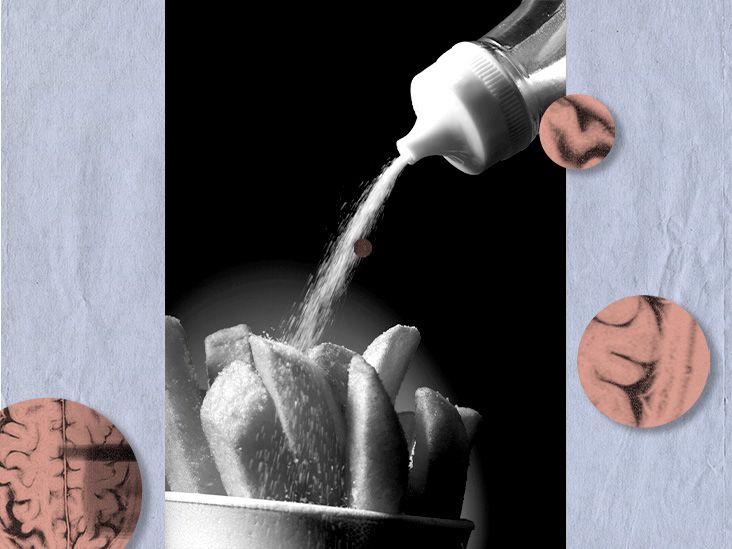Millions of people around the world experience sadness or depression at some point in their lives. Feeling sad is an integral part of depression, but sadness and depression are not the same.
The
Knowing and understanding the differences between sadness and depression can help a person recognize when to seek treatment.
In this article, we help the reader make this distinction and suggest treatment options for depression.

Defining sadness and depression is important for improving well-being.
Sadness
Sadness is a normal human emotion that
Many different life events can leave people feeling sad or unhappy, such as:
However, a person experiencing sadness can usually find some relief from crying or discussing their frustrations with others. More often than not, sadness has links to a specific trigger.
Sadness usually passes with time. If it does not pass, or if the person becomes unable to resume normal function, this could be a sign of depression.
Depression
Depression is a mood disorder that has an overpowering effect on many parts of a person’s life. It can occur in people of any gender or age and alters behaviors and attitudes.
In 2021, around
Symptoms
- sadness
- feelings of guilt, worthlessness, and hopelessness
- feelings of irritability and frustration
- difficulty sleeping and concentrating
- changes in appetite and weight
- a lack of energy
- a loss of interest in hobbies
In severe cases, the person may think about or attempt suicide. They may isolate themselves from family or friends and feel unable to attend work or school.
If these feelings of doubt last longer than
For a diagnosis of MDD, the doctor should link the symptoms only to depression and not to another medical diagnosis, such as substance use disorder or another underlying condition.
Unlike sadness, depression can leave a person struggling to get through their day. Sadness is just one element of depression.
Help is out there
If you or someone you know is in crisis and considering suicide or self-harm, please seek support:
- Call or text the 988 Lifeline at 988 or chat at 988lifeline.org. Caring counselors are available to listen and provide free and confidential support 24/7.
- Text HOME to the Crisis Text Line at 741741 to connect with a volunteer crisis counselor for free and confidential support 24/7.
- Not in the United States? Find a helpline in your country with Befrienders Worldwide.
- Call 911 or your local emergency services number if you feel safe to do so.
If you’re calling on behalf of someone else, stay with them until help arrives. You may remove weapons or substances that can cause harm if you can do so safely.
If you’re not in the same household, stay on the phone with them until help arrives.
If a person has symptoms of depression for longer than
A physician can help determine the level of treatment necessary to manage symptoms.
Following diagnosis, possible treatments include medication, counseling, and psychotherapy.
Medications
Medications include selective serotonin reuptake inhibitors (SSRIs), a type of antidepressant.
These function
Examples of SSRIs include:
These drugs can ease the symptoms of depression, although they do carry a risk of adverse side effects.
For example, when people first use antidepressants, these drugs present a risk of symptoms deteriorating before they improve. Family members of the person taking the medication should monitor them closely and seek medical attention if symptoms worsen.
The Food and Drug Administration (FDA) has expressed concern that some SSRIs can cause increased suicidal ideation in younger people. They may also pose some risk to the fetus if taken during pregnancy.
As a result, the drugs carry a black box warning, which is an important notice on the patient package insert outlining the possible dangers of the drugs.
When prescribing SSRIs, prescribers must carefully balance the benefits and drawbacks of use.
Psychotherapy and counseling
Psychotherapy involves talking with a trained professional.
A person can pursue psychotherapy on its own or with the support of antidepressant medications. A therapist
Some examples of psychotherapy include cognitive behavioral therapy (CBT) and interpersonal therapy.
A medical team might admit a person with severe depression to a hospital if they are in immediate danger of harming themselves, either because of the risk of suicide or lack of ability to care for themselves.
Outpatient facilities and psychotherapy clinics can help with long-term care.
Mental health resources
Visit our dedicated hub for more research-backed information and resources on mental health and well-being.
Is depression just another word for sadness?
No, depression is not the same as sadness. Sadness is a common emotion and is usually temporary.
Depression, meanwhile, is a common mental illness that involves a person feeling persistently sad for more than
Can a person be depressed but not sad?
Generally speaking, a person with depression will feel sad.
However, not everyone experiences depression in the same way.
Depression and sadness are linked but are not the same.
Sadness is an emotion that everyone experiences, often after stressful or upsetting life events. Depression is an ongoing mental health disorder that can drastically affect daily life.
Specific triggers will often cause sadness, whereas depression may have no identifiable cause. Sadness is a part of depression but is more temporary in nature.
A person should seek a medical opinion if sadness continues for a disproportionate amount of time. This could indicate the development of depression.

